Five things you need to know about Walt Maddox
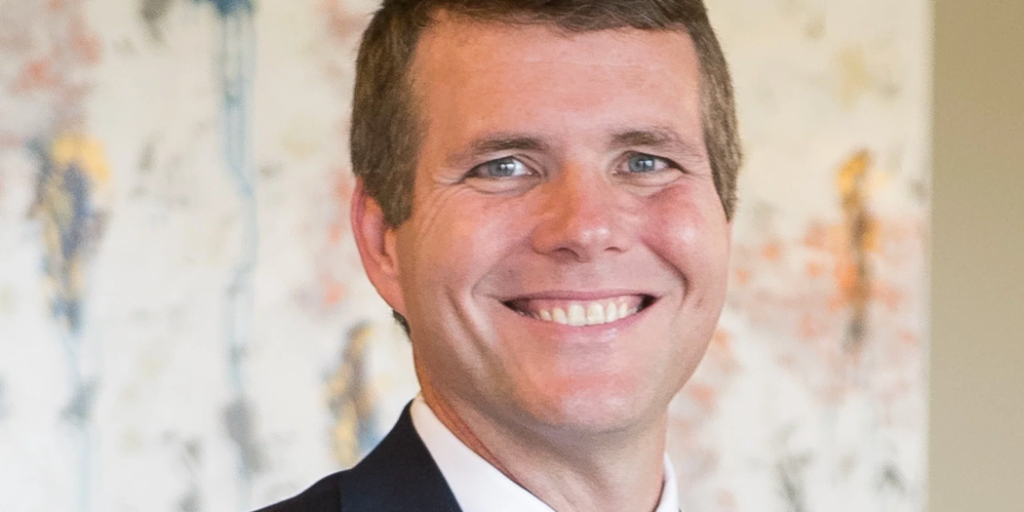
Walt Maddox won the democratic nomination for governor, with nearly 55 percent of the votes. His closest competitor, former Chief Justice Sue Bell Cobb held only 28.98 percent of the vote. But now that the primaries are over, the real battle begins. Maddox will face against incumbent governor and Republican candidate Kay Ivey in the November 6 general election. With that in mind, Here’s five things you need to know about Walt Maddox: 5. While at UAB, he was a four-year letterman on the football team. Maddox attended the University of Alabama in Birmingham in 1991, and played on the college’s football team for four years. In his freshman year 120 players walked on and after four season Maddox was one of only 16 lettermen left. “I’m very proud of that,” Maddox told the Tuscaloosa news. “I wasn’t that good, but I worked so hard to do it. I feel like I’ve spent my life trying to prove myself. I have this desire within me to do that. It gives me the drive to do well.” Maddox was invited back in April of 2013 to coach a UAB scrimmage game to raise funds for the victims of the tornados that swept through the state on April 2, 2011 destroying parts of Tuscaloosa and Birmingham. Not only did the game provide Maddox with a way to help his constituents even more, but he also achieved a life-long dream of his, coaching football. 4. His background is in public education, which is a tradition in his family. After earning his Bachelors degree in Political Science and a Master’s in Public Administration, from UAB, Maddox began his career in public education, a family tradition. In 1996 Maddox served as a field director for the Alabama Educational Association, until 2001 when he was appointed to be the Executive Director of Personnel for Tuscaloosa City Schools where he served until he was elected as mayor of Tuscaloosa. 3. He garnered national attention for his role in recovery efforts after “tornadoes demolished one-seventh of his city” in 2011. During his second term as mayor, tragedy struck the city of Tuscaloosa on April 27, when one of the worst tornado outbreaks in U.S. history demolishing one-seventh of the city. The recovery process has been long and hard for the city, but Maddox received national attention for his demeanor and leadership during the process. “Though Tuscaloosa’s long-term recovery process has had its critics, Maddox emerged from the disaster beloved by his constituents, who saw a young and energetic leader guiding the traumatized community with a steady hand and calm disposition,” said the New York Times. In commemoration of the fifth anniversary of the tornado that tore through Tuscaloosa, the City – under Mayor Maddox’s leadership – launched the website 5 Yrs Fwd, highlighting how recovery from the disaster has progressed. 2. He is the youngest mayor in the history of the city of Tuscaloosa. In 2005, longtime Tuscaloosa mayor Al DuPont retired, and Maddox faced against city council member Sammy Watson in the election. The race resulted in a runoff later that year which Maddox won with 54 percent of the vote. He was only 33 years old when he was elected Mayor of Tuscaloosa, making him the youngest mayor in the history of the city. 1. His favorite hobby is running, and he has completed 9 marathons and several half-marathons. Running can do wonders for your overall mental health, immune system, and is an excellent stress reliever. Maddox’s favorite hobby is running; he has run nine marathons and several half marathons. Only .5 percent of the U.S. population has run a full marathon, with even fewer people completing more than one.
Supreme Court upholds Ohio decision, says states can purge voters

A divided U.S. Supreme Court upheld an Ohio election law giving state officials the power to purge individuals from the voters rolls who fail to vote for six years and failed to respond to notices from election officials to confirm their residency. Writing for the majority in a 5-4 decision Monday, Justice Samuel Alito wrote an estimated one in eight voter registrations in the United States are invalid or inaccurate. “A state violates the failure-to-vote clause only if it removes registrants for no reason other than their failure to vote,” Alito said. By contrast, he said, Ohio waits six years before removal, following federal law “to the letter.” Alito said Ohio’s voter removal system is not in violation of federal laws approved in 1993 and 2002 by Congress. “We have no authority to second-guess Congress or to decide whether” [Ohio’s law] “is the ideal method for keeping its voting rolls up to date,” Alito wrote. “The only question before us is whether it violates federal law. It does not.” Disagreement Not everyone agrees with the majority decision. Justice Stephen Breyer wrote an 18-page dissent. There, he argued a voter’s failure to respond to a notice “is an irrelevant factor in terms of what it shows about whether that registrant changed his or her residence.” “To add an irrelevant factor to a failure to vote, say, a factor like having gone on vacation or having eaten too large a meal, cannot change Ohio’s sole use of ‘failure to vote’ into something it is not,” penned Breyer. Alabama U.S. Rep. Terri Sewell also disagrees with the high court’s decision, saying voting is not a “use it or lose it right.” “Voting is not a use it or lose it right. It is a permanent right guaranteed by our Constitution,” explained Sewell. “The Supreme Court’s misguided decision today opens the door for states to disenfranchise voters just because they did not cast their ballot. Already we have seen the impact of this voter suppression tactic in Ohio where more than 7,000 votes were thrown out because of the state’s recent voter purge. In our democracy, your vote is your voice, and we cannot allow lawmakers to silence the voice of the people. Today, we must recommit ourselves to fighting voter suppression tactics, from voter purges to restrictive voter ID laws, wherever they exist.” Sewell is the lead sponsor of the Voting Rights Advancement Act (VRAA), legislation which would restore protections for voters in states with a recent history of discrimination. Five years after the Supreme Court’s decision to gut the Voting Rights Act in Shelby County v. Holder, the VRAA addresses a wave of voter ID laws, racial gerrymandering, and other voter suppression tactics enacted at the state level.
Bradley Byrne: Protecting a Gulf Coast tradition

Down here on the Gulf Coast, fishing is a way of life for many people. It is a tradition that spans generations and is one way we bond with our family and friends. In fact, some of my fondest memories happened while casting a reel. I remember my father showing me how to bait a hook and teaching me about the patience of waiting for a bite. I enjoy carrying on that tradition with my kids. Just in time to celebrate National Fishing and Boating Week, Alabama’s 2018 Red Snapper season officially opened on June 1st. The Red Snapper season is a real boon for our coastal communities, and the impact is felt all throughout Southwest Alabama. The economic impact flows to everything from gas stations to restaurants to hotels. Unfortunately, in seasons past, Alabama has felt the full force of Washington when it comes to regulating our recreational fishing. These regulations are based on junk science, yet have a huge impact on when we can and cannot fish. Anyone who has been fishing in the Gulf over the last few years knows there are more than enough Red Snapper in our waters, and Washington’s methods of stock assessments are sorely out of touch with what is happening. When it comes down to it, no one understands the needs of our fisheries better than those who cast a reel along the Gulf Coast. The federal bureaucrats in Washington have no business controlling our fisheries when those of us on the coast know what is best for our fishermen. That’s why, earlier this year, I wrote to the National Marine Fisheries Service to advocate for Alabama’s application for an Exempted Fishing Permit (EFP), which would allow the state to set our own season for the next two years. I was pleased when this EFP was granted by the Department of Commerce on April 20, 2018, securing Alabama’s 47-day Snapper season for the 2018 and 2019 seasons. Specifically, the 2018 Red Snapper season in Alabama will run from June 1 through September 3, with Fridays, Saturdays, and Sundays open to fishing. The entire week of the Fourth of July (June 30 through July 8) will also be open for Red Snapper fishing. You see, this is how government should work: take power from Washington and return it to the people who best understand the issue. I am proud to have helped secure a lengthy Snapper season, which means our fishermen will have adequate time to enjoy a Gulf Coast tradition while our coastal communities will benefit from increased revenue. It is truly a win-win situation for coastal Alabama. Of course, there were many people who had a hand in securing an adequate season for our fishermen. I thank Senator Richard Shelby for his support and his work to secure the language for the EFP in last year’s appropriations bill. I also appreciate the Gulf Council for their support of the exempted fishing permit pilot program and Alabama Department of Conservation and Natural Resources Commissioner Chris Blankenship and our other Gulf Coast colleagues for working together to support our fishermen. Ultimately, it was a total team effort to make this 47-day Snapper season a reality. This is a real victory for all our recreational fishermen as well as our coastal region. As I have always said, this issue is about so much for than just our fishermen; the Red Snapper season impacts our entire costal community, and I look forward to a safe and fun season. • • • Bradley Byrne is a member of U.S. Congress representing Alabama’s 1st Congressional District.
Five things you need to know about Kay Ivey
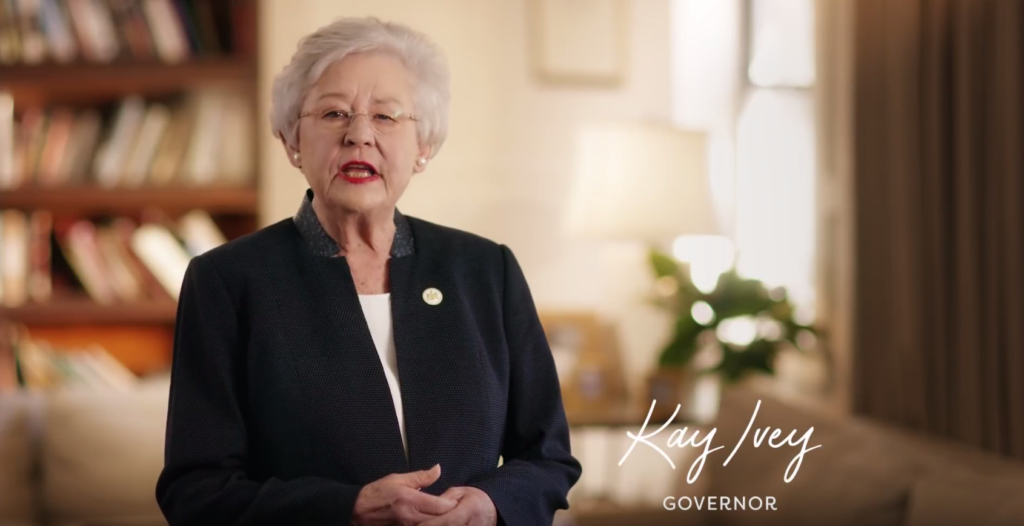
The primaries are over, and the real battle begins. Incumbent Governor Kay Ivey won the republican nomination for governor in a landslide victory, with just over 56 percent of the vote she will face-off against Walt Maddox in the November general election. With that in mind, Here’s five things you need to know about Kay Ivey: 5. She’s been involved in politics since high school Ivey’s first introduction into politics was in 1962 when she served as the lieutenant governor for the Wilcox County High School at Alabama Girls State. While in college at Auburn University she spent four years in the Student Government Association and coordinated for Democratic gubernatorial candidate Lurleen Wallace‘s campaign on the school campus. 4. She first ran as a Democrat in 1982 In 1979 she was appointed by then Democratic Governor Fob James to serve as a member of his state cabinet. Ivey then rose through the ranks quickly, serving as law clerk of the Alabama House of Representatives, and Assistant Director of the Alabama Development Office. In her first attempt to obtain a state office, Ivey ran as a Democrat, and was defeated by Jan Cook in the State Auditor’s race in 1982. Ivey didn’t change parties until 2002, when she began her race for State Treasurer and decided to run as a Republican. 3. She is only the second woman in the state’s history to serve as Governor Out of 54 governors who have been elected to serve as governor to the Yellowhammer State, only two have been female. Lurleen Wallace was the first and only female governor to hold the position until Ivey became the second woman to hold the office in 2017. 2. Under her watchful eye, the Alabama PACT program almost failed In 1989 the Alabama State legislature created the PACT program, allowing parents to pre-pay their children’s college tuition but when tuition rates begin to rise, and stock markets began to fall the program began struggling in the early 2000’s. Ivey, who served as State Treasurer from 2003-2011, said “only market conditions caused this, not staff or the board. It’s due solely to the economic conditions of the country,” according to AL.com. By 2010, the program stopped selling contracts, and the legislature had to pass a plan to save the program, shoveling $548 million over 13 years starting in 2015 to save the day. However, when Young Boozer took office in 2011 he said the money the legislature promised would not be enough to sustain the program, and in May the board approved the settlement of a class-action lawsuit filed by contract holders. 1. She was born on a cattle farm, and was raised as an only child Ivey was born in Wilcox county to Boadman Nettles Ivey, an Army Major and a World War II veteran who started a cattle farm in the small town of Camden, Ala. home to less than 1,000 people at the time. She used her upbringing in several different ads this campaign season, the most notable an ad in which she touted her knowledge of “mountain oysters” saying “don’t give me a mountain oyster and tell me it’s seafood.”
The end of net neutrality is officially here

Changes are coming for the way the U.S. government regulates the internet. The Federal Communications Commission (FCC) narrowly voted to dismantle the controversial 2015 Obama-era net neutrality internet regulations — which imposed utility-style regulations on internet service providers (ISPs), which prevented them from blocking, speeding up, or slowing down access to specific online services — in December. Their repeal became official on Monday as part of the FCC’s effort to provide an open Internet while paving the way for better, faster and cheaper Internet access for consumers. On Monday, the FCC implemented the “Restoring Internet Freedom Order,” saying the order “replaces unnecessary, heavy-handed regulations dating back to 1934 with strong consumer protections, increased transparency and common-sense regulations that will promote investment and broadband deployment.” “The 2015 decision to impose these heavy-handed utility-style regulations on the internet was a mistake,” FCC chairman Ajit Pai said in a video, explaining the rules were a “solution in search of a problem” when in fact “the Internet wasn’t broken.” The Internet is “the greatest free-market success story in history,” Pai wrote in a Wall Street Journal op-ed published in November. Regulations “designed in the 1930s to tame the Ma Bell telephone monopoly” are hurting investment, he argued in the piece. What is net neutrality? Net neutrality is the principle that Internet service providers treat all data on the Internet the same, and not discriminate or charge differently by user, content, website, platform, application, type of attached equipment, or method of communication. Intent of the Restoring Internet Freedom Order The FCC’s framework for protecting Internet freedom has three key parts: Consumer ProtectionThe Federal Trade Commission will police and take action against Internet service providers for anticompetitive acts or unfair and deceptive practices. The FTC is the nation’s premier consumer protection agency, and until the FCC stripped it of jurisdiction over Internet service providers in 2015, the FTC protected consumers consistently across the Internet economy. TransparencyA critical part of Internet openness involves Internet service providers being transparent about their business practices. That’s why the FCC has imposed enhanced transparency requirements. Internet service providers must publicly disclose information regarding their network management practices, performance, and commercial terms of service. These disclosures must be made via a publicly available, easily accessible company website or through the FCC’s website. This will discourage harmful practices and help regulators target any problematic conduct. These disclosures also support innovation, investment, and competition by ensuring that entrepreneurs and other small businesses have the technical information necessary to create and maintain online content, applications, services, and devices. Internet Service Providers must clearly disclose their network management practices on their own web sites or with the FCC. For more information about these disclosures, you can visit https://www.fcc.gov/isp-disclosures. Removes Unnecessary Regulations to Promote Broadband Investment The Internet wasn’t broken in 2015, when the previous FCC imposed 1930s-era regulations (known as “Title II”) on Internet service providers. And ironically, these regulations made things worse by limiting investment in high-speed networks and slowing broadband deployment. Under Title II, broadband network investment dropped more than 5.6% — the first time a decline has happened outside of a recession. The effect was particularly serious for smaller Internet service providers—fixed wireless companies, small-town cable operators, municipal broadband providers, electric cooperatives, and others—that don’t have the resources or lawyers to navigate a thicket of complex rules. Removing these outdated and unnecessary regulations will create a strong incentive for companies to pour resources into building better online infrastructure across the country and bringing faster, better, and cheaper Internet access to more Americans. Alabama opposition Upon arriving to the U.S. Sen, newly elected Sen. Doug Jones made quick on his campaign promises to fight to restore net neutrality provisions. In January, he co-sponsored resolution aimed to do just that — overturn Pai’s decision to repeal net neutrality. “A free and open internet is crucial for our nation to remain a leader in the global economy, provide our children a quality education, and promote freedom of speech,” Jones said in a statement. “Repealing the Open Internet Order would allow companies to raise the price of internet access and discriminate against certain internet traffic. Restoring net neutrality is the right thing to do to protect Alabama consumers and to provide an equitable platform for companies of all sizes to compete for their customers.” Senate Democrats managed to pass the resolution in May. It has now moved to the House for consideration, but it faces an an uphill battle. Whether or not repeal of net neutrality has adverse effects on consumers, or actually helps, remains to be seen.
Donald Trump to leave summit early after meeting with Kim Jong Un

In the latest twist in the drama-filled nuclear talks with North Korea’s Kim Jong Un, President Donald Trump announced on the eve of their historic meeting that he will be leaving Singapore early because the nuclear negotiations have moved “more quickly than expected.” That was before the two had even met, and it was not clear whether it was good news or not. No details were given on any possible progress in preliminary talks between aides at the talks. And the abrupt change in schedule came shortly after U.S. Secretary of State Mike Pompeo had seemed to lower expectations for the meeting, which Trump had earlier predicted could potentially yield an on-the-spot end to the Korean War. Instead, Pompeo suggested the summit, while historic, might yield little in the way of concrete success other than to pave the way for more meetings in the future. On the day before the meeting, weeks of preparation appeared to pick up the pace, with U.S. and North Korean officials meeting throughout Monday at a Singapore hotel. Trump spoke only briefly in public, forecasting a “nice” outcome for the summit during a meeting with Singapore’s prime minister. Kim spent the day mostly out of view — until he left his hotel for a late-night tour of Singapore sights, including the Flower Dome, billed as the world’s biggest glass greenhouse. Trump’s early departure will be second from a summit in just a few days. The sudden change in schedule added to a dizzying few days for foreign policy for Trump, who shocked U.S. allies over the weekend when he used a meeting of the Group of 7 industrialized economies in Canada to alienate America’s closest friends in the West. Lashing out over trade practices, he lobbed insults at the G-7 host, Canadian Prime Minister Justin Trudeau. He left early, and as he flew to Singapore, he tweeted that he was yanking the U.S. out of the traditional group statement. As Trump was trying to build a bridge with Kim, he was smashing longtime alliances with Western allies with his abrasive performance at the G-7. He continued to tweet angrily at Trudeau from Singapore, saying Monday “Fair Trade is now to be called Fool Trade if it is not Reciprocal.” Trump advisers cast his actions as a show of strength before the Kim meeting. Economic adviser Larry Kudlow told CBS News in Washington that “Kim must not see American weakness.” Trump, after the first-ever meeting between U.S. and North Korean leaders, had been scheduled to fly back to Washington on Wednesday morning after spending Tuesday with Kim in Singapore. But on the eve of the summit, he altered his schedule, opting to return at about 8 p.m. on Tuesday after a full day of meetings with Kim — almost 15 hours earlier than previously anticipated. “The discussions between the United States and North Korea are ongoing and have moved more quickly than expected,” the White House said in a statement. U.S. and North Korean officials have been holding preliminary meetings in the run-up to the Tuesday summit. In recent days, Trump had suggested the meeting could last days, potentially even resulting in a nuclear deal. But U.S. officials have since avoided such lofty declarations. Abbreviating the meeting to a single day could make it easier to cast the summit as an early, symbolic opening, rather than a substantive negotiation in which a lack of tangible progress would suggest failure on the part of the negotiators. The White House said the summit was to kick off at 9 a.m. Tuesday. After greeting each other — an image sure to be devoured around the world — the two leaders planned to sit for a one-on-one meeting that a U.S. official said could last up to two hours, with only translators joining them. The official wasn’t authorized to discuss the plans and insisted on anonymity. The daylong summit will also include a working lunch and a larger meeting involving aides to both leaders, the White House said. On the U.S. side, Trump was to be joined by Pompeo, chief of staff John Kelly, national security adviser John Bolton and U.S. Ambassador to the Philippines Sung Kim, along with a few others. After concluding the summit, Trump planned to speak to reporters in Singapore before flying home, the White House said. Pompeo, addressing reporters ahead of the summit, said the U.S. was prepared to take action to provide North Korea with “sufficient certainty” that denuclearization “is not something that ends badly for them.” He would not say whether that included the possibility of withdrawing U.S. troops from the Korean Peninsula, but stressed the context of the discussions was “radically different than ever before.” “I can only say this,” Pompeo said. “We are prepared to take what will be security assurances that are different, unique, than America’s been willing to provide previously.” In Singapore, the island city-state hosting the summit, the sense of anticipation was palpable, with people lining spotless streets Monday waving cellphones as Trump headed to meet Singapore’s Prime Minister Lee Hsien Loong. As Trump and Lee sat down for a working lunch at the Istana house, Trump sounded optimistic, telling Lee, “we’ve got a very interesting meeting in particular tomorrow, and I think things can work out very nicely.” Trump also called the leaders of South Korea and Japan in advance of the summit, Pompeo said. Meanwhile, U.S. and North Korean officials huddled at a hotel Monday ahead of the sit-down aimed at resolving a standoff over Pyongyang’s nuclear arsenal. Delegates were outlining specific goals for what Trump and Kim should try to accomplish and multiple scenarios for how key issues can be resolved, an official briefed on the discussions said. The meetings also served as an ice breaker of sorts as the teams worked to get better acquainted after decades of minimal U.S.-North Korea contact. Trump and Kim arrived in Singapore on Sunday, both staying at luxurious and heavily guarded hotels less than half a mile
Randall Woodfin names Josh Coleman as Birmingham’s first LGBTQ liaison
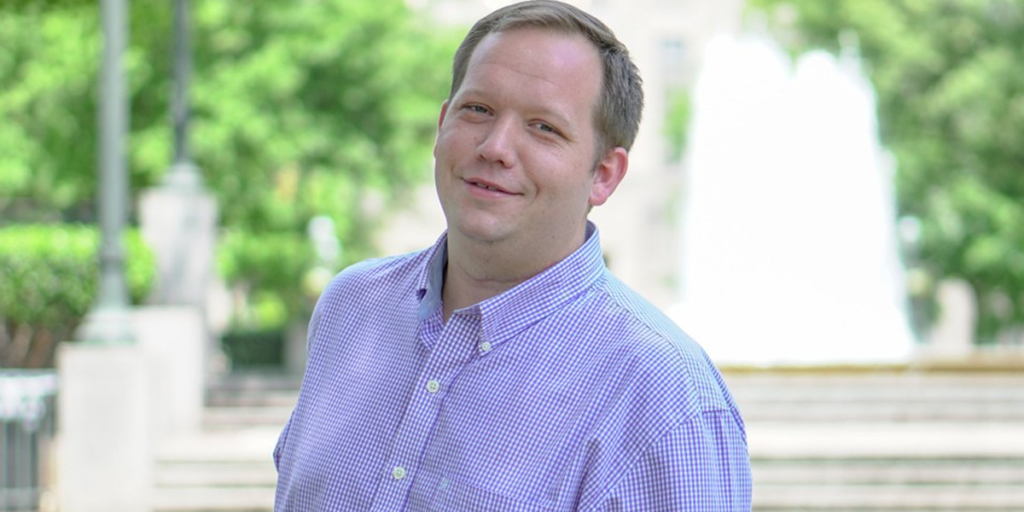
It may be outside of his first 100 days, but Birmingham Mayor Randall Woodfin is making good on yet another 100 days campaign promise: to hire an LGBT liaison to serve on my executive staff. On Sunday, Woodfin named Josh Coleman during the city’s PRIDE FEST event at Sloss Furnaces. “From our administration’s standpoint, when we watch what’s happening in our country, when we watch what’s happening at the state level, I think it’s important that municipal governments, local governments, play an active role in making sure that we’re not discriminating, that we fight against discrimination,” said Woodfin. As LGBTQ liaison, Coleman will build upon the relationship between the LGBTQ community and the City of Birmingham by focusing on the public safety of the LGBTQ communities, and by helping to prevent LGBTQ discrimination in our city wherever it may exist. Coleman currently serves as is vice president of Central Alabama Pride, a nonprofit focused on celebrating pride and diversity in Central Alabama. He also serves as the National Committeeman with the Alabama Young Democrats and is an Advisor of the Alabama Young Democrats’ LGBT caucus. Coleman also serves on the board of directors for Central Alabama Pride and the Greater Birmingham Democrats. Since 2008 Josh has served on the board of several non-profits, worked on a variety of political campaigns, and as Alabama’s volunteer coordinator for Hillary Clinton‘s 2016 presidential campaign. “It really is an honor to serve in this position, and have a mayor interested in making sure that all of its residents are represented,” said Coleman. “This is the next step in Mayor Woodfin’s commitment to having an open, fair and inclusive city.” In his new role, which begins June 25, Coleman Watch Woodfin make the announcement below:
Troy King hit’s hard at Steve Marshall for ‘fat cat fundraiser’ on schedule
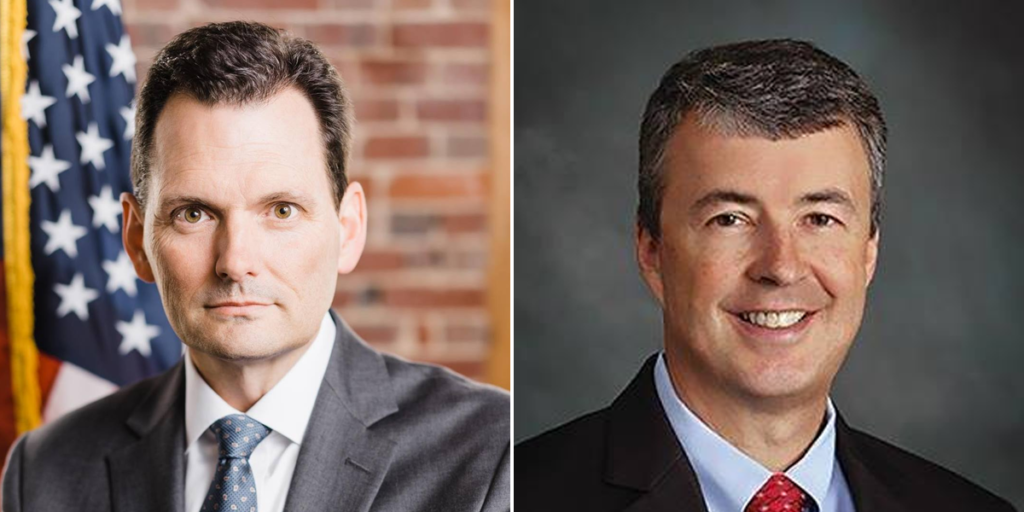
It’s safe to say Troy King knows a thing or two about the day-to-day proceedings of the Alabama Attorney General’s office. As the former Alabama Attorney General King — who was first appointed attorney general in 2004 by former Gov. Bob Riley, after William Pryor left the office to accept federal judge position with the Eleventh Circuit Court of Appeals. King later won his own term — is running for the seat yet again, hoping to return to his former office. After the June 5 primary, he’s moved one step closer. In a crowded GOP field, King managed to garner enough votes to pull sitting AG Steve Marshall into a runoff election on July 17, where he’s hoping to ultimately find victory as the Party’s nominee. Now, King is doing all he can to make a case for himself as to why he’s better suited for the position than Marshall. On Monday, he held a press conference outside of the state capitol in Montgomery, Ala. to do just that. “My preacher always said, if you know what to know what’s important to a man, if you want to know where his priorities lie, you look at his calendar. You don’t listen to what he is,” said King standing in front of a blown-up fundraiser invitation for Marshall. He continued, “Today with violent crime at a 20 year high, you might be wondering where is Steve Marshall. Is he home with his staff writing new laws? Is he at a parole board hearing battling for justice that’s been hard-fought for and hard-won, on behalf of victims families who are terrified of having justice snatched out of their hands? Is he in a grand jury room somewhere in Alabama? Is he in a court room somewhere in Alabama?” “No, he’s at an exclusive golf club in North Carolina… he is standing there with fat cat donors and lobbyists who spent $25,000 to spend the weekend with him. And $5,000 a person to come to a political fundraiser.” King went on to explain what he’s doing differently. When asked if thought the Attorney General’s office was being bought, he when on to say “it’s at least being rented.” “$425,000 from out of state donors,” King explained. “The only explanation I could come up for is to why people who don’t live in Alabama, who don’t have an interest in Alabama would give the Attorney General that much money if they want something in return.” The winner of the GOP runoff will face Democrat Joseph Siegelman, son of former Gov. Don Siegelman, in November’s general election.
Democrats test liberal messages in midterm House elections
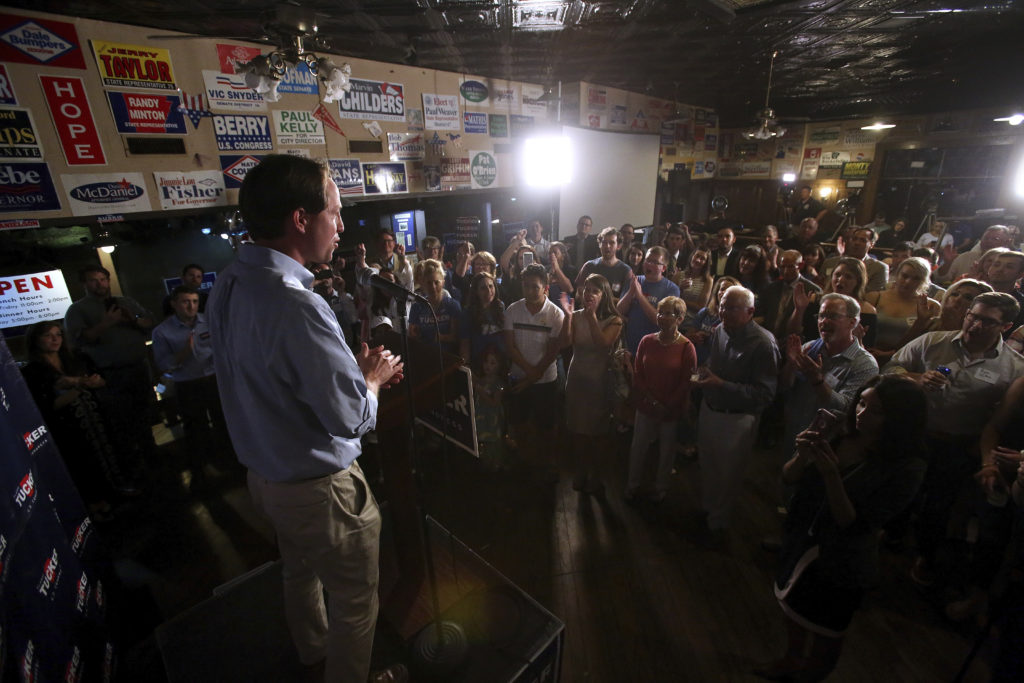
A single-payer health care advocate in South Texas. A gun restriction supporter in Dallas. Cheerleaders in Arkansas and Iowa for public option health care. Weeks into the primary season, Democrats’ midterm class is shaping up to test what liberal messages the party can sell to the moderate and GOP-leaning voters who will help determine control of the House after the November election. It’s not one size fits all, with every candidate checking every box wanted by the activists driving the opposition to President Donald Trump and the GOP Congress, and Democratic voters typically aren’t tapping the most liberal choices in targeted districts. But, taken together, the crop of nominees is trending more liberal than many of the “Blue Dog” Democrats swept away in Republicans’ 2010 midterm romp. That means voters now represented by a Republican will be asked to consider some or all of the mainstream Democratic priorities that may have been considered “too liberal” in the past: more government involvement in health insurance, tighter gun laws, a path to citizenship for people in the country illegally, reversing parts of the GOP tax law, support for LGBTQ rights. “You have ballpark 60 districts as diverse as Kansas and Staten Island. One bumper-sticker message will be self-defeating,” said former congressman Steve Israel of New York, who led Democrats’ national House campaign in 2012. The question is whether that path results in Democrats gaining the 23 new seats they need for a majority. Israel disputes that the current slate represents an overall leftward shift, and national party leaders have still angered liberals with some of their recruitment choices. Still, resistance leaders are confident of their influence. “We are seeing grassroots action and organizing in a meaningful way,” said Maria Urbina, national political director of Indivisible, founded after Trump’s 2016 election. “We see the party apparatus coming in behind some of this action on the ground.” To be clear, not every surviving candidate is a carbon copy of Bernie Sanders, the 2016 presidential candidate whose insurgent campaign emboldened the left with his calls for universal health insurance, a $15-hour minimum wage and tuition-free college. But the influence of Sanders’ inspired base is palpable, as winning nominees have adopted pieces, if not the whole, of an agenda that has become more typical within the party since it lost the House majority eight years ago. At least to date, it’s staved off a Democratic version of the 2010 tea party rise, when GOP leaders, even as they marched in lockstep opposition to then-President Barack Obama, watched archconservative outsiders defeat incumbent Republicans and fundamentally reshape the party’s identity on Capitol Hill. The Democratic path seems to be more incremental evolution. A key indicator is the Democratic Congressional Campaign Committee’s “Red to Blue” program, the party’s top candidates for flipping Republican seats. Twenty candidates with that designation have faced primaries already; only one of them — among the party’s most conservative choices — has lost. (About two dozen more Red to Blue candidates have upcoming primaries, and the DCCC could add to its list.) On health care, at least two of the Red to Blue hopefuls past their primaries call explicitly for a single-payer, government health insurance system, four more want a government-run public option, and several others generically call for expanded coverage under the Democrats’ 2010 health insurance overhaul. Eighteen were endorsed by End Citizens United, signifying their pledges to block corporations and wealthy individuals from spending unlimited amounts on campaigns. A leftward shift on health care is clear in Arkansas, where state Rep. Clarke Tucker dominated a primary as the more centrist choice — he’s among the Democrats saying he wouldn’t back California’s Nancy Pelosi for speaker — in a congressional district Trump won by almost 21 points. A cancer survivor, Tucker does not support single-payer, but he does say all Americans, regardless of age, should be able to buy Medicare coverage. That’s quite a leap from 2010, when then-Sen. Blanche Lincoln, a self-declared Arkansas centrist, joined other moderate Democrats to back the Affordable Care Act only after a public option was scrapped. She lost her 2010 re-election bid in a 21-point landslide anyway. Beyond national Democrats’ favored candidates, environmental lawyer Mike Levin won a November ballot spot in a Southern California district championing single-payer. He beat three other candidates who support Medicare-for-all health insurance. Together, the four Democrats received more votes than the eight-member Republican primary field in a district that retiring Rep. Darrell Issa has represented since 2001. “I know that with a bold progressive agenda and with the continued mobilization of the progressive base in California 49, we’re going to win come November,” Levin said. In some instances, the liberal arguments come from candidates who can sell themselves as trustworthy messengers, even if the message is stereotyped as out of place. So Abby Finkenauer in an expansive northeast Iowa district and Colin Allred in metro Dallas can forcefully advocate for ideas like paid family leave, long a goal of the American labor movement. Finkenauer plays up her working-class roots as she also stakes out liberal positions on abortion rights. Allred still looks every bit the NFL defender he was before becoming a civil rights attorney. He’s outspoken about LGBTQ rights while endorsing a $15 minimum wage and a partial semi-automatic gun ban — all notable contrasts with the Republican congressman, Pete Sessions, he’s trying to defeat in November. Republicans, meanwhile, say bring it on. “Wacky, far-left positions,” said Courtney Alexander of the Congressional Leadership Fund, a GOP super PAC aligned with Speaker Paul Ryan, “aren’t going to fly in suburban swing districts this fall.” Republished with permission from the Associated Press.
Kim Jong Un could give up ICBMs but keep some nuclear forces

After years of effort to develop nuclear missiles that can target the U.S. mainland, is North Korean leader Kim Jong Un really ready to pack them away in a deal with President Donald Trump? Perhaps, but that wouldn’t necessarily mean Pyongyang is abandoning its nuclear ambitions entirely. Tuesday’s meeting in Singapore between Kim and Trump comes after a sharp turn in North Korea’s diplomacy, from rebuffing proposals for dialogue last year to embracing and even initiating them this year. The change may reflect a new thinking about its nuclear deterrence strategy — and how best to secure the ultimate goal of protecting Kim’s rule. A look at how Kim’s appetite for talks swung amid the North’s ups and downs in weapons development and what that says about how he might approach his negotiations with Trump: ___ TESTS AND TALKS North Korea’s attitude toward dialogue in the past two years has seemed to shift with setbacks or progress in its weapons tests. Even after starting a rapid process of weapons development following a nuclear test in January 2016, Pyongyang constantly invited rivals to talks that year. It proposed military meetings with Seoul to reduce tensions and indicated it could suspend its nuclear and missile tests if the U.S.-South Korean military drills were dialed back. Washington and Seoul demurred, saying Pyongyang first must show genuine intent to denuclearize. At the time, North Korea’s quest for a credible nuclear deterrent against the U.S. was troubled. The military conducted eight tests of its “Musudan” intermediate-range missile in 2016, but only one of those launches was seen as successful. The country’s path toward an intercontinental-range ballistic missile appeared cut off. North Korea’s stance on dialogue changed dramatically, though, following the successful test of a new rocket engine in March 2017, which the country hailed as a significant breakthrough. The engine, believed to be a variant of the Russian-designed RD-250, powered a successful May flight of a new intermediate-range missile, the Hwasong-12, reopening the path to an ICBM. That was followed in July by two successful tests of an ICBM, the Hwasong-14. Pyongyang’s demands for talks disappeared. Proposals to meet from a new liberal government in Seoul were ignored. Determined to test its weapons in operational conditions, the North flew two Hwasong-12s over Japan and threatened to fire them toward Guam, a U.S. military hub. The North’s state media brought up President Richard Nixon’s outreach to Beijing in the 1970s following a Chinese test of a thermonuclear bomb, saying it was likewise inevitable that Washington will accept North Korea as a nuclear power and take steps to normalize ties. Kim talked of reaching a military “equilibrium” with the U.S. By all signs, he was fully committed to completing an ICBM program he intended to keep. ___ THE DETERRENCE GAME Kim’s turn toward diplomacy this year suggests he may have concluded the nuclear deterrence strategy was failing, some analysts say. After a November test of a larger ICBM, the Hwasong-15, Kim proclaimed his nuclear force as complete, but his announcement may have been more politically motivated than an assessment of capability. Although the Hwasong-15 displayed a greater range than the Hwasong-14, there was no clear sign the North had made meaningful progress in the technology needed to ensure that a warhead would survive the harsh conditions of atmospheric re-entry. New U.S. National Security Strategy and National Defense Strategy reports released in December and January respectively also seemed to reduce the credibility of Kim’s deterrence plans, said Hwang Ildo, a professor at Seoul’s Korea National Diplomatic Academy. In the documents, the U.S. assesses it could sufficiently defend against the small number of North Korean ICBMs — believed to be about 10 or fewer — with its 44 ground-based interceptors deployed in Alaska. Missiles fired from North Korea would have to pass Alaska to reach the U.S. mainland. Experts are divided on whether the interceptors, which Washington plans to deploy in larger numbers soon, can be counted on to destroy incoming warheads. However, Hwang said, real capability doesn’t matter as much as Trump believing that the system works, which reduces the bargaining power of the ICBMs. Kim can’t be the Mao Zedong to Trump’s Nixon if the U.S. sees his weapons as containable. With North Korea’s limited resources, as well as the threat of a pre-emptive U.S. attack, it’s difficult for the North to mass produce enough ICBMs to overwhelm the interceptors in Alaska. Rather than prolonging his nation’s economic suffering, Kim may have concluded it would be better to deal away his ICBMs at the cusp of operational capability, especially when it was no longer clear the missiles would guarantee his survival. “North Korea always tries to maintain flexibility and increase its options from step to step,” Hwang said. ___ A PAKISTANI MODEL? What never changes for North Korea is that the survival of the Kim regime comes first. Nam Sung-wook, a North Korea expert at Seoul’s Korea University, said Kim is probably modeling a nuclear future after Pakistan, which began building a nuclear arsenal in the 1990s to deter India. Pakistan is now estimated to have more than 100 warheads that are deliverable by short- and medium-range weapons and aircraft. Kim may be seeking a deal where he gives up his ICBMs but keeps his shorter-range arsenal, which may satisfy Trump but drive a wedge between Washington and its Asian allies, Seoul and Tokyo. In drills with shorter-range weapons in 2016, the North demonstrated the potential to carry out nuclear attacks on South Korean ports and U.S. military facilities in Japan. In negotiations, Kim may try to exclude submarine technologies from a freeze or verification process to leave open a path toward sub-launched ballistic missile systems, Hwang said. Then, if diplomacy fails and Kim goes back to building nuclear weapons, the systems would expand their reach and provide a second-strike capability to retaliate if North Korea’s land-based launch sites are destroyed. North Korea successfully tested a submarine-launched missile that flew about 500 kilometers (310 miles) in


